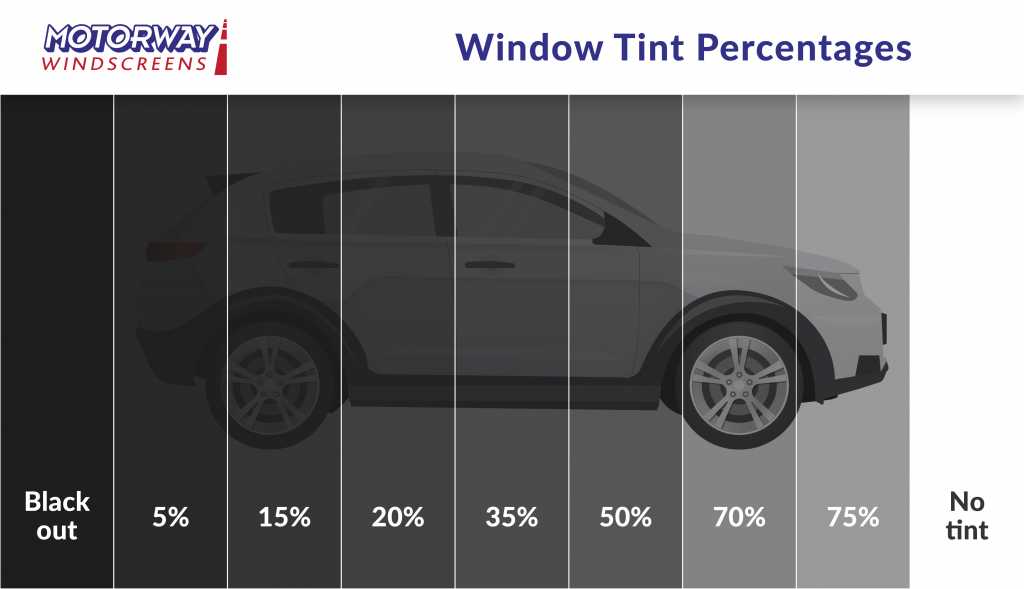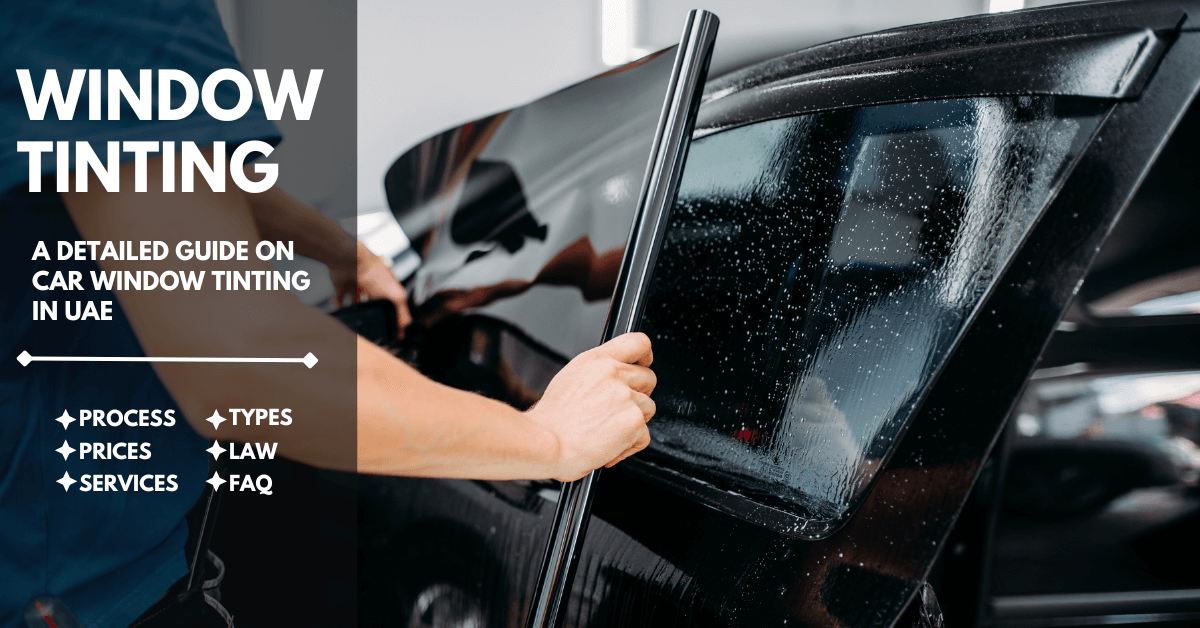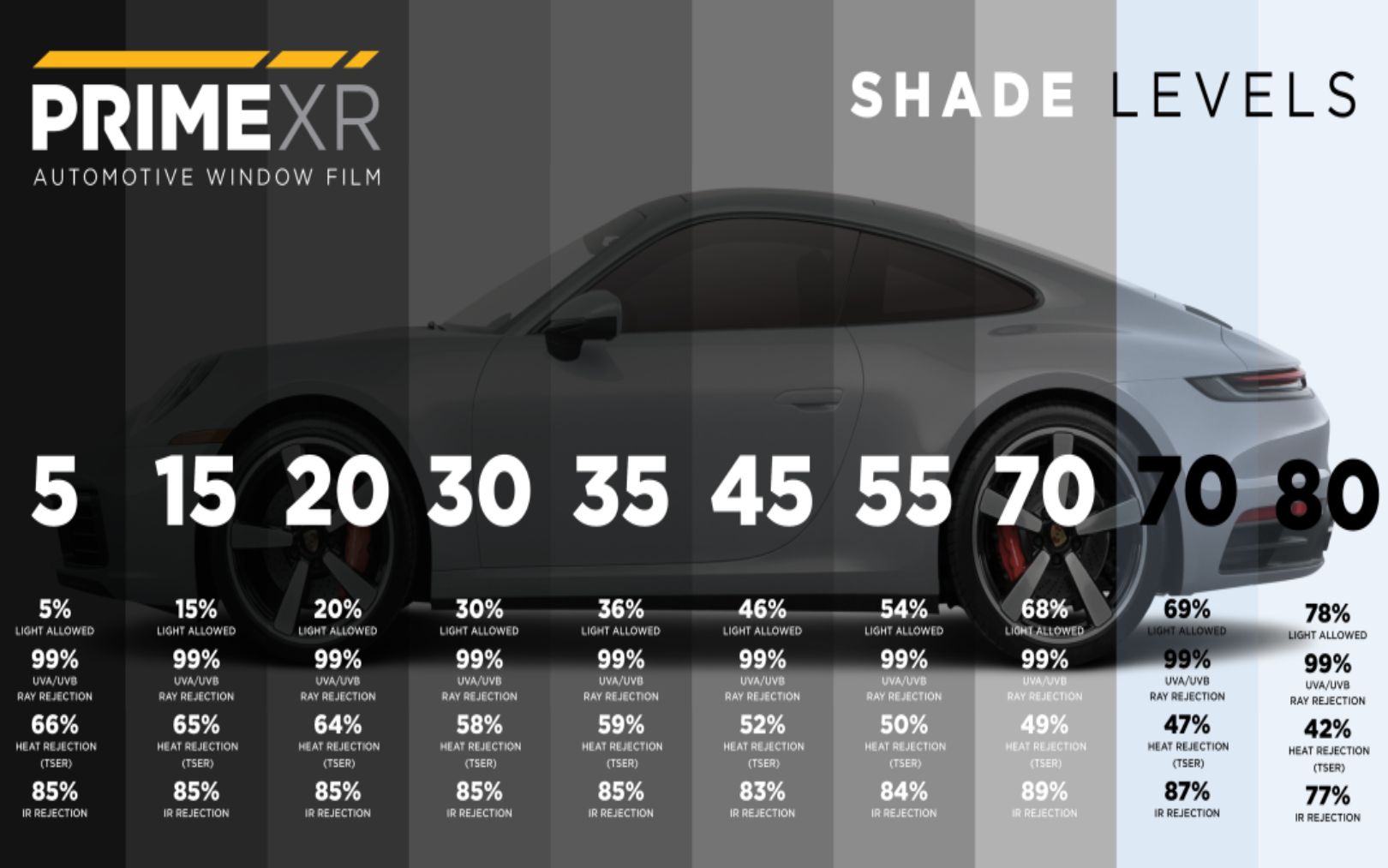A Comprehensive Overview to Comprehending Auto Window Tint and Its Benefits
Vehicle home window tinting offers greater than just an aesthetic purpose for cars. It provides numerous kinds, each with distinctive functions and advantages. Comprehending these options, along with lawful regulations and maintenance pointers, is essential for any car proprietor. The advantages may greatly enhance driving comfort and automobile durability. As one explores the nuances of home window tinting, the concern develops: what sort of color is finest suited for specific requirements?
Comprehending Car Home Window Color: What It Is and Exactly how It Works
Vehicle home window tint acts as a safety barrier that boosts automobile visual appeals while offering functional advantages. This thin film is used to the interior surface of cars and truck windows, lowering glow and obstructing damaging ultraviolet (UV) rays from the sun. By filtering system sunlight, auto window tint helps to control the interior temperature of the automobile, causing enhanced convenience for passengers and lowered reliance on air conditioning.Additionally, it protects the car's inside from fading, preserving both upholstery and control panel materials. The color can likewise enhance privacy, making it more hard for outsiders to see inside the vehicle. Particular kinds of window color can increase security; in the occasion of a crash, the film aids hold shattered glass with each other, reducing the danger of injury from flying fragments. In general, auto home window color offers both practical and aesthetic functions, making it a preferred choice among automobile owners.
Sorts Of Window Color: An Introduction of Options
When thinking about window color alternatives, numerous kinds are offered, each with unique characteristics. Dyed, metalized, and ceramic window tints offer varying degrees of warmth denial, UV defense, and visual allure. Recognizing these distinctions can help vehicle owners make notified options based upon their preferences and demands.
Dyed Home Window Color
Dyed window tint represents a preferred option among cars and truck owners seeking a economical and efficient means to enhance their vehicle's aesthetics and privacy. This sort of tint is created by positioning a layer of color between a safety layer and a glue layer, leading to a darkened look that decreases glow and improves visual convenience. While dyed home window color successfully obstructs unsafe UV rays, it may not supply the exact same degree of warm being rejected as various other tint kinds. Additionally, its shade can discolor with time, possibly reducing its effectiveness. Despite these disadvantages, dyed home window color continues to be favored for its cost-effectiveness and capacity to provide a smooth, trendy aim to different lorry models.
Metalized Window Color
Metalized window tint supplies a balance of style and capability, making it a popular option amongst automobile proprietors. This kind of tint integrates metallic particles within the film, enhancing both aesthetic charm and heat rejection. The reflective top quality of metalized color assists to reduce glow and improve personal privacy, while also supplying UV defense, which safeguards the vehicle's interior. Furthermore, metalized home window color can enhance home window toughness, possibly stopping smashing during mishaps. It is essential to note that the metal components can interfere with digital signals, such as General practitioner and cell phone reception. On the whole, metalized window color gives a reliable remedy for those looking for a mix of resilience, sunlight, and look defense for their cars.
Ceramic Home Window Color
Ceramic window tint represents an innovative choice in the spectrum of auto home window movies, offering unique benefits over traditional tints. Unlike colored or metalized films, ceramic colors make use of sophisticated ceramic particles, which effectively turn down warm and UV rays without jeopardizing visibility. This modern technology ensures that cars stay cooler, lowering reliance on cooling and enhancing fuel performance. Furthermore, ceramic home window colors are much less likely to interfere with electronic devices, such as GPS or mobile signals, making them a practical selection for modern lorries. In addition, their durability and scrape resistance add to a much longer life-span compared to various other kinds of colors. In general, ceramic home window color provides exceptional performance, convenience, and security, making it a recommended option for critical automobile proprietors.
Benefits of Car Window Tint: Beyond Aesthetics
While many individuals associate automobile window color with enhanced style, its advantages expand far past simple looks. One substantial benefit is warmth reduction; window color can block as much as 99% of harmful UV rays, safeguarding and maintaining the indoor colder furniture from fading. This not just improves convenience throughout warm climate but also decreases dependence on a/c, causing boosted gas efficiency.In enhancement, car window tint offers an added layer of privacy and safety. Colored home windows make it tough for outsiders to see inside the automobile, which can prevent theft and secure belongings. In addition, several colors reinforce the glass, minimizing the possibility of smashing in case of a mishap, thereby boosting safety.In addition to these functional benefits, vehicle window tint can additionally add to glare reduction, improving visibility for vehicle drivers and passengers alike. This complex strategy to convenience and security makes window color a beneficial financial investment for car owners.
Lawful Considerations: Tinting Laws by State
Before dedicating to vehicle window color, automobile proprietors should navigate an intricate landscape of tinting policies that vary by state. Each state has certain laws controling the allowable levels of color darkness and reflectivity for different home windows, including windscreens, front side windows, and back home windows. These regulations frequently include visible light transmission read this (VLT) percents, which dictate exactly how much light can go through the tinted glass.Some states allow darker tints on back windows while restricting front side and windscreen tints for safety and security factors. Furthermore, certain states might call for a certification from the maker to confirm conformity with tinting legislations. Violating these laws can result in fines, required removal of the tint, or both. It is necessary for automobile owners to investigate their state's legislations thoroughly to assure lawful compliance before mounting window tint. This diligence can save money and time in the lengthy run.
Selecting the Right Color: Elements to Think about
When picking the proper home window color for a vehicle, several crucial variables enter play. Tint darkness levels, UV protection ratings, and compliance with lawful guidelines are important factors to consider to assure both aesthetic appeals and performance - Car Glass Tinting. Reviewing these facets will certainly help individuals make an informed decision that fulfills their needs and adheres to regional laws
Tint Darkness Degrees
Picking the ideal color darkness level is important for achieving the desired equilibrium between aesthetics and capability in car window tinting. Different states have differing lawful guidelines regarding color darkness, which can influence the choice. Generally, tints are gauged in portions, with lower portions suggesting darker tones. Darker colors offer raised privacy and a smooth look yet can lower presence, particularly in the evening. On the other hand, lighter tints keep a more open feeling, making certain ample presence while still offering some heat and glow reduction. When making a decision, individuals ought to consider their driving behaviors, local regulations, and individual preferences. Ultimately, the best color darkness level boosts the vehicle's appearance while guaranteeing safety and conformity with legal requirements.
UV Protection Score
Color darkness levels play a substantial role in the general performance of car home window tinting, however another crucial variable to assess is the UV defense ranking of the selected color. This ranking suggests the portion of damaging ultraviolet rays that the color can block. Top notch tints frequently supply 99% or more UV security, safeguarding travelers and the automobile's interior from sun damage. Extended exposure to UV rays can cause skin troubles and fading of upholstery, making a high UV security ranking vital for health and long life. When selecting home window tint, customers ought to prioritize this ranking along with darkness degrees to assure optimum convenience and safety and security while driving. Understanding these factors aids in making an informed decision when buying car window tinting.
Lawful Rules Compliance
Understanding regional lawful guidelines is important for any person thinking about car home window tinting. Each state or region has details legislations regulating the allowable degrees of color darkness and reflectivity for various windows. These policies typically specify the visible light transmission portion, identifying just how much light can travel through the tinted glass. Non-compliance can lead to fines, necessary removal of the tint, or concerns throughout car evaluations. Additionally, some locations may have restrictions on making use of specific tinting products, calling for consumers to pick items that fulfill security criteria. It is essential for lorry proprietors to investigate their neighborhood legislations thoroughly prior to picking home window tint to ensure compliance and prevent possible legal difficulties.
Setup Refine: DIY vs. Specialist Solutions
How does one choose in between a do it yourself installment and hiring expert solutions for car home window tinting? The choice commonly rests on budget plan, experience, and wanted outcomes. A DIY method can be affordable, permitting people to reduce labor expenses. It requires a certain level of skill and understanding concerning the tinting procedure. Those that are precise and person may find success with DIY sets offered in the market.Conversely, expert services offer proficiency and top notch products, ensuring a perfect finish. Experts often ensure their work, giving comfort against prospective issues such as this article peeling or gurgling. Additionally, they recognize with regional legislations pertaining to tinting, which can be intricate for the ordinary car owner.Ultimately, the decision reflects a balance in between price, personal capability, and the expected quality of the tinting work. Each alternative has its benefits, and the very best selection depends upon individual circumstances and Look At This choices.
Maintenance Tips: Keeping Your Color in Leading Problem
Maintaining the look and capability of window tint calls for normal interest and care, especially in differing climate conditions. To preserve the color, it is important to prevent using unpleasant cleaning materials, which can scrape or harm the movie. Car Glass Tinting. Instead, soft microfiber fabrics and gentle, ammonia-free cleansers must be used for cleaning the tinted surfaces.Furthermore, it is suggested to wait at the very least 30 days after installation prior to cleaning up the home windows to enable the color to totally stick. Car park in shaded areas or utilizing sunshades can help in reducing the fading results of UV rays and prolong the color's lifespan. Regular inspections for bubbles, peeling off, or staining are advised, as very early discovery can promote repairs. Preventing severe temperature level variations, such as pushing warm home windows in chilly weather, will aid keep the tint's stability and appearance over time.
Often Asked Inquiries

For How Long Does Window Color Typically Last on a Vehicle?
Window tint generally lasts in between 5 to ten years, relying on variables such as high quality, application, and ecological conditions. Regular maintenance and proper treatment can prolong its life expectancy, making sure suitable performance and look in time.
Can Home Window Tinting Damages My Auto's Original Glass?
Home window tinting, when applied properly, does not harm a vehicle's original glass. Improper installment or low-grade materials may lead to problems like gurgling or peeling, possibly impacting the glass's stability over time.
Is Home Window Tinting Safe for All Kinds of Vehicles?

Will Home Window Tinting Gap My Vehicle Guarantee?
The question of whether home window tinting gaps a car service warranty often depends on the manufacturer's policies. Normally, if the color does not harm the automobile, service warranties typically remain undamaged. However, seeking advice from the dealership is recommended.

Can I Eliminate Window Color Myself if Needed?
Removing home window tint oneself is feasible, yet it calls for careful attention to avoid harming the glass. Individuals should make use of appropriate tools and strategies to guarantee a successful elimination without leaving adhesive residue or scrapes behind. While dyed home window color properly blocks unsafe UV rays, it may not supply the same level of heat being rejected as various other color kinds. Ceramic window tint stands for an advanced alternative in the range of vehicle home window films, providing unique advantages over typical colors. Prior to devoting to vehicle window tint, automobile proprietors should browse a complicated landscape of tinting laws that vary by state. These policies usually include visible light transmission (VLT) portions, which dictate just how much light can pass via the tinted glass.Some states permit darker tints on rear home windows while limiting front side and windshield colors for safety and security reasons. Tint darkness levels play a substantial role in the general performance of vehicle home window tinting, but one more important factor to assess is the UV security score of the picked color.